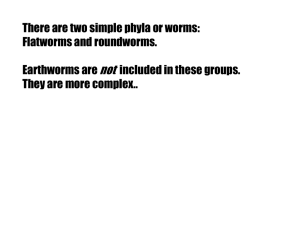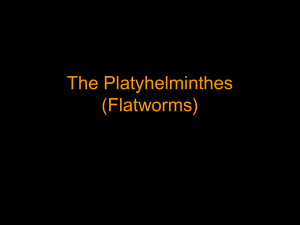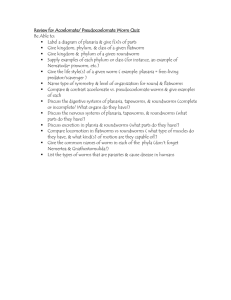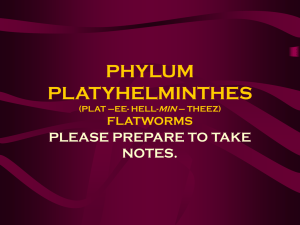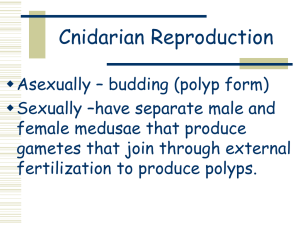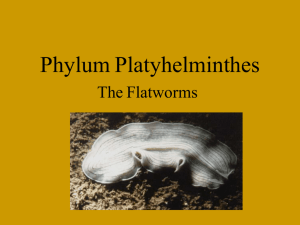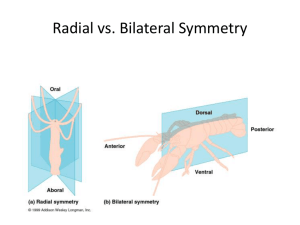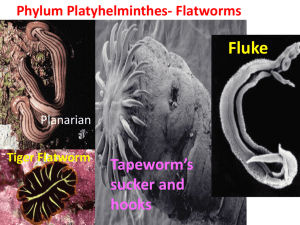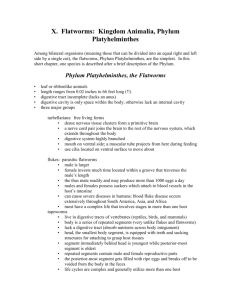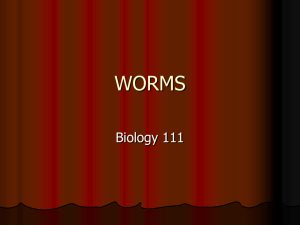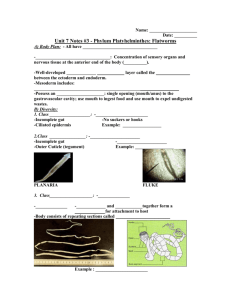Phylum Platyhelminthes
advertisement
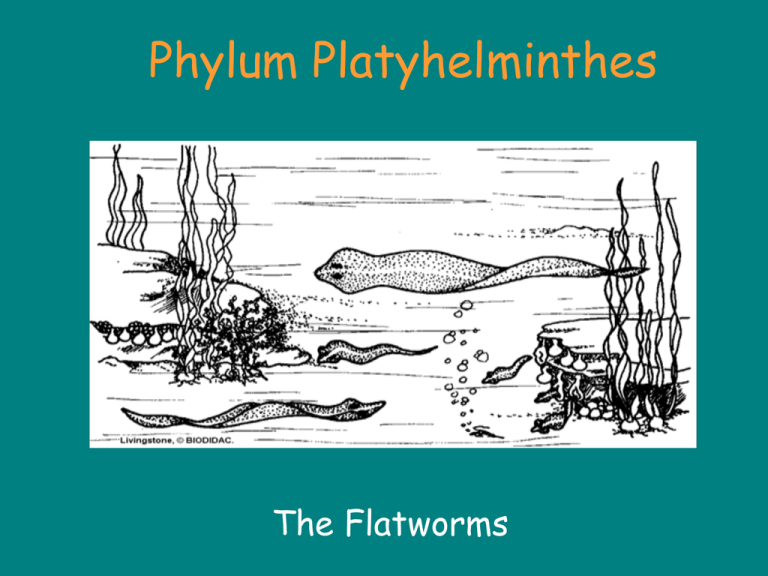
Phylum Platyhelminthes The Flatworms Phylum Platyhelminthes • About 20,000 species » About 80% of parasites are from this phylum • Divided into three major groups • Free-living flatworms • Parasitic tapeworms • Parasitic flukes Flatworms • Range in size – Some microscopic free-living forms – Parasitic forms over 20 meters long • Show many advances over Cnidaria General Characteristics • The following characteristics are shared by ALL flatworms: – Bilateral symmetry » the most primitive bilateral animals – Development of definite anterior and posterior ends – Tissue-organ level of organization » Simple organ systems – Flattened body shape » Dorsoventrally Body Plan of Flatworms • Acoelomate – No Body cavity • NOT a tube-within-a-tube – One simple tube • GVC present • Incomplete digestive tract – One opening – Food and wastes enter / exit through same opening » Two way flow Planaria (class Turbellaria) • Typical flatworms • 5-25 mm in length • Freshwater organisms – Streams and ponds – Beneath rocks, leaves, logs, etc. • Planaria are carnivores – Smaller animals – Dead organisms Internal Structure of a Planarian • Simple digestive system – Mouth • Pharynx – tube that can be extended through the mouth – GVC • With a primitive branched intestine • Extracellular and intracellular digestion (cells lining intestine) Getting Around … Movement Towards Cephalization • Planaria can move about freely – Muscles – Underside covered with cilia • Presence of eyespots – Small brain located beneath • Development of primitive nervous system – Two nerve cords extend the length of the body – Transverse nerve cords extend across the body Reproduction in Planaria • Asexual Reproduction – Fission » Head separates from tail end – Unbelievable potential for regeneration!! – Tails CAN regenerate heads!! Reproduction in Planaria • Sexual Reproduction – Hermaphrodites . . . Again! – REMEMBER: self-fertilization does not occur – Fertilization is INTERNAL – Fertilized eggs are shed in protective capsules – Eggs hatch into tiny new planarians! What’s Different About Flukes and Tapeworms?!? Liver Fluke Tapeworm • Specialized adaptations for parasitic lifestyle – Thick cuticle to protect against digestive enzymes – Structures to allow parasite to attach to host Tapeworms scolex Suckers Hooks Specialized Reproductive Measures • Each square making up the body is a reproductive sac – > 100,000 fertilized eggs – Each square will eventually break off and is released in the feces of the host » Proglottids Proglottids – Capsule surrounding larva is digestable, allowing the infection of a new host Platyhelminthes Advances in Adaptation • Symmetry » Bilateral • Cephalization » Distinct anterior advancements » Coordinated movement • Asexual and Sexual Reproduction » Regeneration » Internal fertilization » parasitism Platyhelminthes fact: The longest flatworm ever found, a tapeworm, was over 90 FEET LONG . . .
